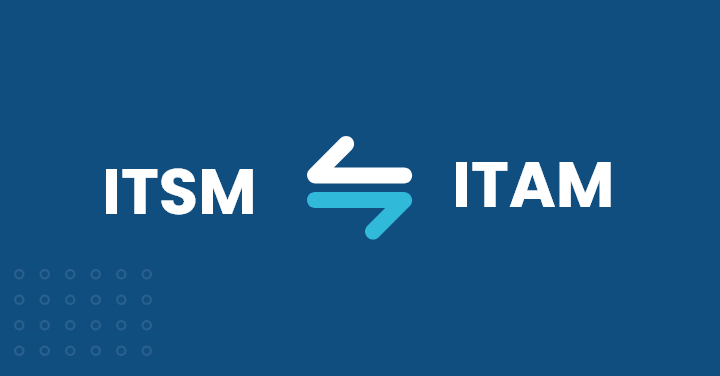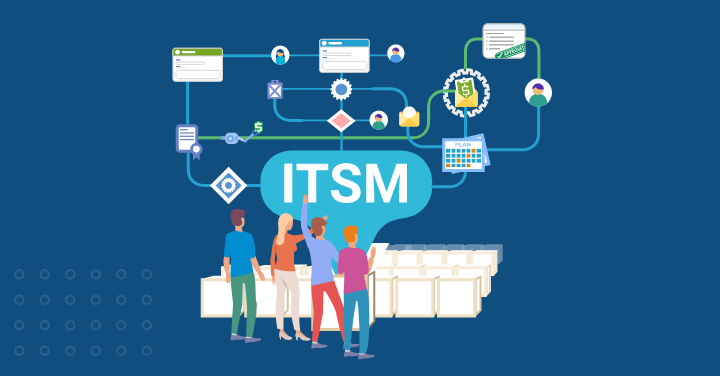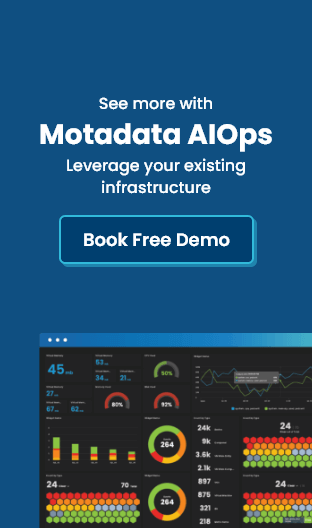As organizations grow and rely more heavily on technology, the number of tools, systems, and platforms used by IT departments increases rapidly.
Each of these solutions plays an important role, but they often operate independently, leading to scattered information, duplicated efforts, and a lack of overall visibility.
This is where IT Service Management (ITSM) becomes essential. ITSM provides a structured way to manage and deliver IT services, but its true value is realized only when it connects with the rest of the IT and business ecosystem.
This connection is known as ITSM integration, and it is becoming one of the most critical priorities for CIOs, CISOs, SOC Managers, and IT Directors in modern enterprises.
ITSM integration allows information to flow smoothly between IT service management tools and other key systems such as monitoring platforms, IT Asset Management (ITAM), collaboration tools, customer-facing systems, DevOps environments, and security solutions.
Instead of treating each system as a separate entity, integration creates a unified environment where teams can see the full picture and work more efficiently.
In today’s fast-paced digital world, the ability to detect issues early, fix them quickly, and keep services running smoothly is essential—and integration plays a central role in making this possible.
What Is ITSM Integration?
ITSM integration simply means connecting your IT service management platform with other tools used across the business.
When these systems work together, they create a shared and consistent view of IT operations.
For example, monitoring tools can automatically send alerts to the service desk, IT Asset Management systems can share device information with the CMDB, and DevOps pipelines can communicate change updates directly to ITSM workflows.
This creates a more connected and data-driven environment where information is easier to access, understand, and act upon.
In practice, ITSM integration turns scattered tools into a coordinated ecosystem. It eliminates the need for teams to manually transfer data, search for information, or switch between systems.
Whether it’s a security alert, a device that needs updating, or a customer request that requires quick action, integration ensures the right people get the right information at the right time.
Why ITSM Integration Matters Today
Modern enterprises no longer operate within the boundaries of a traditional data center. They work in hybrid, multi-cloud, remote, and globally distributed environments where issues can arise anywhere and at any time.
When systems are disconnected, IT teams often struggle with delayed responses, inconsistent data, and a lack of visibility across critical applications and infrastructure.
ITSM integration solves these challenges by creating a central source of truth for IT operations.
With integration in place, information flows freely between teams and tools. IT operations, security, service desk, and development teams can collaborate more naturally because they all rely on a consistent set of data.
This prevents silos and reduces the friction that often slows down troubleshooting. As a result, incident response becomes quicker, service quality improves, and end users experience fewer disruptions.
The organization benefits as a whole by moving from a reactive model of fixing problems after they occur to a more proactive model where issues are predicted, prevented, or resolved before they impact business operations.
Core Elements of ITSM Integration
A strong integration strategy begins with reliable connections between different systems.
These connections are typically built using APIs or other communication methods that allow tools to exchange data in real time.
Once systems can talk to each other, workflows can be automated. For example, an alert from a monitoring tool can instantly create a ticket in the service desk system, assign it to the right team, and attach relevant diagnostics.
This eliminates manual tasks and accelerates the entire incident management process.
Another important element is visibility. Integrated systems make it easier to view information from different sources in a single place.
Dashboards and unified reports bring together data from IT Asset Management, service requests, monitoring alerts, change management activities, and security tools.
With this level of visibility, IT leaders can make more informed decisions, track performance trends, and identify areas that need improvement.
Where ITSM Integration Creates the Most Value
One of the most noticeable benefits of ITSM integration appears in incident management. When monitoring tools detect an issue such as high CPU usage, service interruption, or suspicious activity, they can automatically notify the ITSM system.
Instead of waiting for someone to log the issue manually, a ticket is created instantly, complete with detailed information that helps analysts understand the problem faster. This reduces delays and helps IT teams respond more efficiently.
Integration is equally valuable in change management, especially in environments where development and operations teams work closely together.
By connecting CI/CD pipelines or DevOps tools to the ITSM platform, every change made to applications or systems can be logged, assessed, and tracked.
This ensures transparency and reduces the risk associated with updates, deployments, and configuration changes.
Another key area of improvement is IT Asset Management and CMDB accuracy. When ITAM systems share data directly with the CMDB, information about devices, licenses, configurations, and relationships stays current.
This becomes essential during troubleshooting, audits, and compliance checks, where accurate data can prevent failures or penalties.
The benefits extend further into security operations, where integrating SIEM or SOAR platforms with ITSM allows security alerts to follow structured remediation workflows.
A security event can be captured, assigned, investigated, and resolved more systematically. This is especially important for SOC teams that rely on well-defined processes to manage threats consistently.
Finally, integration improves user support and service desk operations. Chatbots, self-service portals, and collaboration platforms can be linked with the ITSM system so users can get quicker responses, submit requests naturally, and receive automatic updates.
This raises overall employee satisfaction and enables the service desk team to handle more requests with fewer delays.
How ITSM Integration Drives Strategic Benefits
When systems are integrated, the speed and effectiveness of IT operations improve significantly. Mean Time to Detect (MTTD) and Mean Time to Resolve (MTTR) decrease because teams have immediate access to the details they need.
Alerts are routed more intelligently, and incidents are resolved with more context. This leads to greater uptime, fewer repeated problems, and a smoother experience for end users.
Integrated environments also support better governance and compliance. With connected systems, every action—whether an update, configuration change, or incident response—can be tracked and logged.
This makes it easier for organizations to prove compliance with internal policies as well as external regulations.
A major long-term advantage of integration is its role in enabling AIOps. When systems share data freely, AI and machine learning models can analyze larger datasets to identify patterns and predict issues.
This helps IT teams prevent outages, reduce noise from constant alerts, and address performance problems before they escalate. Over time, this shifts IT from a reactive model to a more predictive and proactive one.
Employee experience also improves because issues are resolved faster, communication is clearer, and self-service tools become more effective.
When IT operates smoothly, employees can focus more on their work rather than on waiting for assistance.
Challenges Enterprises Face When Integrating ITSM
Although ITSM integration offers substantial benefits, the journey is not always straightforward. One common challenge is maintaining consistent data across tools.
When different systems store information in different formats or use different naming conventions, integrating them requires careful planning and ongoing coordination.
Another hurdle is the compatibility of systems. Some older or proprietary tools may not support modern integration methods or open APIs, making it harder to connect them to newer platforms.
Organizations also need to manage the human side of integration. Changing established workflows or introducing new processes can lead to resistance among teams that are used to working in certain ways.
Security is another area that requires attention. Sharing data across multiple platforms increases the importance of strong access controls, encryption, and monitoring to ensure that information is not exposed to unauthorized individuals. Without proper safeguards, integration can unintentionally open new risks.
Best Practices for Achieving Successful ITSM Integration
The most effective integration strategies start with clear goals.
Organizations should begin by identifying which workflows need improvement, which systems should be connected first, and what outcomes they expect. Having a well-defined plan helps avoid unnecessary complexity.
Choosing platforms that support open and flexible integration standards ensures long-term viability. Modern ITSM systems designed with open APIs make it easier to connect with a wide range of tools, including IT Asset Management platforms, DevOps systems, collaboration tools, and security solutions.
A phased approach to integration is usually the most successful. Instead of connecting all systems at once, organizations should start with the most critical workflows—such as incident management automation—and gradually expand.
This allows teams to adapt to changes more comfortably and gives IT leaders time to refine processes before moving to the next phase.
Continuous monitoring is essential to ensure integrations remain stable as systems evolve. Workflows should be reviewed and updated regularly to keep pace with changing business needs. Training also plays a key role.
Teams across IT operations, security, development, and business units must understand how integrated workflows function so they can use them effectively.
The Growing Role of AIOps and Automation
AIOps is becoming increasingly important in ITSM integration. With so many systems producing large amounts of data, it is nearly impossible for humans to process everything manually.
AIOps bridges this gap by analyzing events, identifying patterns, and automating routine tasks. When integrated with ITSM systems, AIOps can reduce alert fatigue, prioritize issues based on impact, and even suggest or perform remediation steps automatically.
Automation further strengthens the impact of ITSM integration. Routine tasks such as ticket creation, alert routing, and status updates can happen without manual intervention.
Over time, this leads to faster service delivery, fewer errors, and a more efficient IT team that can focus on strategic initiatives rather than repetitive tasks.
The Future of ITSM Integration
As digital environments become more complex, ITSM integration will continue to evolve. The shift toward unified observability will allow IT teams to track the health and performance of services in real time.
Hyperautomation will bring together ITSM, analytics, workflows, and AI-driven actions to create end-to-end automated service delivery models.
In the future, IT operations will become increasingly autonomous, with systems capable of diagnosing and resolving issues on their own.
ITSM platforms will take on a more strategic role by aligning IT outcomes with business objectives, improving user satisfaction, and supporting digital transformation efforts across the organization.
Conclusion
ITSM integration is no longer an optional enhancement—it is essential for enterprises seeking efficiency, agility, and resilience.
By connecting IT service management with IT Asset Management, monitoring systems, security platforms, DevOps pipelines, collaboration tools, and other business systems, organizations create unified IT operations that are easier to manage and scale.
This integrated approach strengthens governance, speeds up incident resolution, improves compliance, and sets the foundation for predictive operations powered by AIOps.
For IT leaders, embracing ITSM integration is a strategic investment that directly supports business continuity and future growth.
If you want to simplify your IT operations and bring all your tools together in one place, Motadata can help. Our unified platform connects your service desk, assets, monitoring systems, and automation tools so your teams can work faster and with more clarity.
Talk to our experts to see how Motadata can support your integration goals and help you build a more reliable IT environment.







